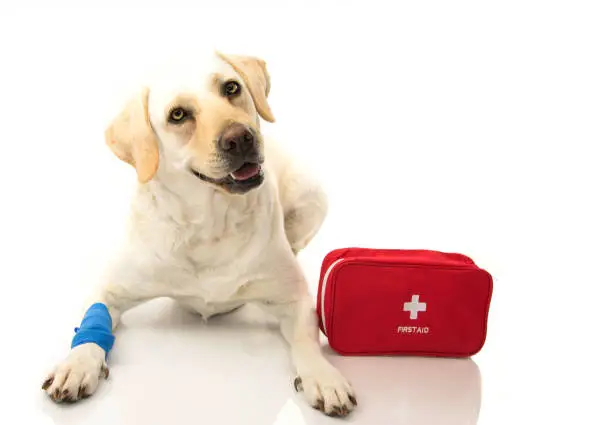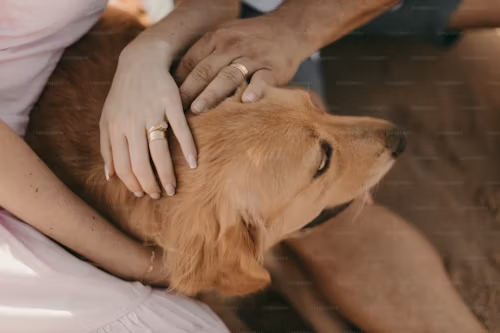Pet First Aid: Essential Tips for Emergency Care for Your Dog or Cat

Emergencies can happen at any time, and being prepared to handle them can make all the difference for your pet’s health and safety. Whether it’s a sudden illness, injury, or accident, knowing basic pet first aid can help you provide immediate care until you can get to a veterinarian. This guide will cover essential first aid tips and emergency care practices for dogs and cats to help you respond effectively when your pet is in distress.
1. Preparing a Pet First Aid Kit
Having a well-stocked first aid kit for your pet is the first step in being prepared for emergencies. Here’s what your kit should include:
- Gauze Pads and Bandages: For wrapping wounds and controlling bleeding.
- Adhesive Tape: To secure bandages in place.
- Hydrogen Peroxide (3%): For cleaning wounds or inducing vomiting if advised by a vet.
- Antiseptic Solution: For disinfecting wounds (e.g., Betadine or Chlorhexidine).
- Tweezers and Scissors: For removing foreign objects or trimming fur around wounds.
- Digital Thermometer: To check your pet’s temperature.
- Disposable Gloves: To maintain hygiene while handling injuries.
- Sterile Saline Solution: For flushing wounds or cleaning eyes.
- Muzzle: To protect yourself from bites, even the most gentle pet can bite when in pain.
- Emergency Blanket: To keep your pet warm in case of shock.
- Contact Information: Include your veterinarian’s phone number, emergency clinic contacts, and a pet poison control hotline.
2. Common Pet Emergencies and How to Handle Them
A. Bleeding Wounds
What to Do:
- Stay Calm: Panicking can worsen the situation. Approach your pet slowly and calmly.
- Apply Pressure: Use a clean cloth or gauze pad to apply pressure directly to the wound.
- Elevate the Injury: If the wound is on a limb, elevate it to reduce blood flow.
- Secure the Bandage: Wrap the wound with gauze and secure it with adhesive tape. Do not wrap too tightly as it could restrict blood flow.
- Seek Veterinary Care: Even minor wounds can become infected; consult your vet as soon as possible.
B. Choking
What to Do:
- Inspect the Mouth: Carefully open your pet’s mouth to see if the object is visible. Be careful not to push it further down.
- Remove the Object: If you can see and safely reach the object, use tweezers to gently remove it.
- Perform the Heimlich Maneuver:
- For Dogs: Place your hands just behind the rib cage and push upward and forward.
- For Cats and Small Dogs: Place them on your lap, and with the heel of your hand, give quick, firm pushes just below the ribs.
- Check for Breathing: Once the object is removed, ensure your pet is breathing normally.
- Visit the Vet: Even if the object is removed, your pet needs to be checked for any damage to the throat or lungs.
C. Seizures
What to Do:
- Stay Calm and Safe: Do not try to restrain your pet. Clear the area around them to prevent injury.
- Time the Seizure: Note the length of the seizure; if it lasts more than 5 minutes, it is a medical emergency.
- Do Not Put Anything in the Mouth: Pets do not swallow their tongues during seizures. Inserting objects can cause injury.
- Comfort Your Pet: After the seizure, speak softly and comfort your pet. They may be disoriented or temporarily blind.
- Seek Veterinary Help: Contact your veterinarian immediately for advice on next steps.
D. Poisoning
What to Do:
- Identify the Poison: Determine what your pet has ingested. Check the labels of any possible toxins, such as medications, household chemicals, or plants.
- Call Your Vet or Poison Control: Contact your veterinarian or a pet poison control hotline for specific instructions. Do not induce vomiting unless advised.
- Do Not Give Food or Water: Some substances can react with food or water, worsening the situation.
- Follow Instructions: If directed to induce vomiting, use hydrogen peroxide (3%) as instructed by your vet.
- Emergency Vet Visit: Get your pet to the vet immediately for treatment.
E. Fractures and Broken Bones
What to Do:
- Minimize Movement: Do not attempt to reset the bone. Keep your pet as still as possible to avoid further injury.
- Create a Temporary Splint: If you must move your pet, use a splint made of rolled towels or newspapers to support the limb.
- Avoid Direct Contact with the Injury: Keep your hands away from the broken area to prevent pain and additional damage.
- Transport Safely: Use a flat surface, like a board or blanket, to move your pet without bending the injured limb.
- Immediate Vet Care: Fractures need professional treatment; head to your veterinarian immediately.
F. Heatstroke
What to Do:
- Move to a Cool Area: Immediately get your pet out of the heat and into a shaded or air-conditioned space.
- Cool Your Pet Gradually: Use cool (not cold) water to wet their fur. Offer small sips of water if they are conscious and not vomiting.
- Monitor Temperature: Use a thermometer to check their temperature. Normal body temperature for dogs and cats is 101-102.5°F (38-39°C).
- Avoid Ice: Do not use ice-cold water or ice packs; cooling too quickly can cause shock.
- Seek Emergency Care: Heatstroke is life-threatening; get to the vet as quickly as possible.
3. Pet CPR: Life-Saving Steps
If your pet stops breathing or their heart stops beating, knowing how to perform CPR could save their life.
Steps for CPR:
- Check for Breathing and Pulse: Place your hand on their chest to feel for a heartbeat.
- Position Your Pet: Lay your pet on their right side on a flat surface.
- Perform Chest Compressions:
- For Dogs Over 30 Pounds: Compress the chest at the widest point.
- For Small Dogs and Cats: Use your thumb and fingers to compress the chest just behind the elbow.
- Compressions and Breaths: Perform 30 chest compressions followed by 2 rescue breaths into their nose.
- Repeat: Continue until your pet starts breathing or until you reach the veterinarian.
4. Recognizing When to Seek Veterinary Help
While first aid can stabilize your pet, it’s crucial to recognize when professional help is needed. Always seek veterinary care for:
- Severe bleeding that doesn’t stop within a few minutes.
- Choking that cannot be resolved.
- Persistent seizures lasting more than 5 minutes.
- Suspected poisoning or ingestion of a foreign object.
- Visible fractures or severe limping.
- Heatstroke symptoms not resolving with immediate cooling efforts.
5. Preventing Common Pet Emergencies
Prevention is the best strategy to keep your pet safe. Here are some tips to minimize risks:
- Pet-Proof Your Home: Keep toxic substances, sharp objects, and small items out of reach.
- Regular Check-ups: Routine vet visits can catch potential health issues early.
- Proper Training: Train your pet to respond to basic commands like “come” and “stay” to keep them out of harm’s way.
- Safe Exercise: Supervise playtime and outdoor activities to prevent accidents.
- Proper Identification: Ensure your pet has up-to-date tags and is microchipped for quick recovery if lost.
Conclusion
Knowing pet first aid can be the difference between life and death in an emergency. By being prepared with a first aid kit, understanding how to handle common emergencies, and knowing when to seek veterinary care, you can provide critical support to your pet when they need it most. Remember, while first aid is vital, it is not a substitute for professional veterinary care. Always follow up with your vet to ensure your pet receives the appropriate treatment for their condition.
Stay calm, act quickly, and keep this guide handy as a quick reference in case of emergencies. Your preparedness could save your pet’s life.




